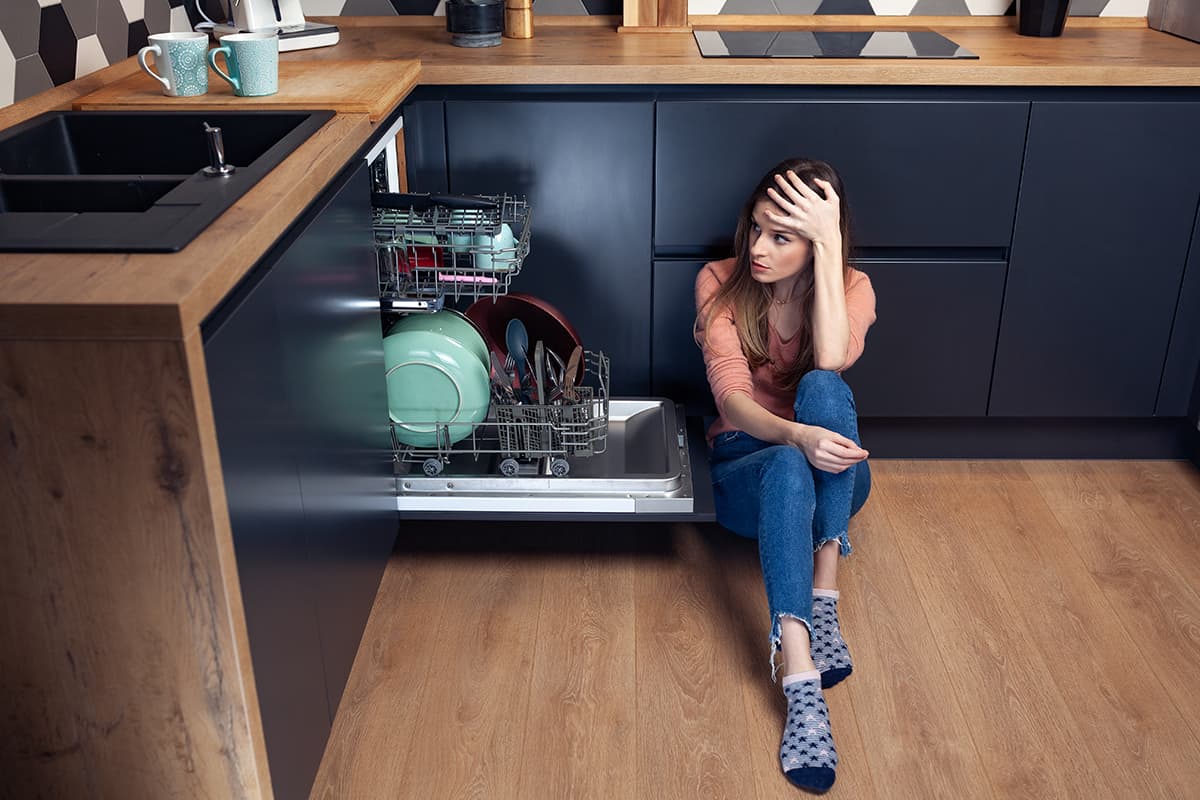When you’re setting up your kitchen, you’ll have to decide where to put all your appliances, including the dishwasher. This can be a bit like a puzzle, trying to fit everything in just right. One question that often comes up is whether the dishwasher should be flush, or level, with the cabinets. This means that the front of the dishwasher lines up exactly with the front of the cabinets, creating a seamless look.
Indeed, the body of a dishwasher can be flush with the cabinets, creating a clean line in your kitchen. However, the door will typically jut out 1-2 inches beyond the cabinets, ensuring it can open and close properly.In this article, we will dive deeper into the pros and cons of having a dishwasher flush with cabinets, how to install it, and what alternatives you have.
Anatomy of a Dishwasher
Ever wondered what’s inside that boxy appliance that magically cleans your dishes? Let’s take a journey into the anatomy of a dishwasher and understand its various parts and functions.
Standard dimensions of a dishwasher
Most dishwasher brands come in a standard size. For example, Whirlpool states that the standard dishwasher is usually 24 inches wide, 24 inches deep, and around 34-1/2 inches tall. The average Bosch dishwasher size is 23-9/16 inches wide, 23-3/4 inches deep, and 34 inches tall.
These sizes are designed to fit perfectly under most kitchen countertops, making it easy to integrate the dishwasher into your kitchen layout.
Variations in dishwasher design and size
While the standard-size dishwasher is most common, there are other types and sizes available as well. Compact dishwashers, for example, are about 18 inches wide and can be a great fit for small kitchens or apartments.
Then there are drawer dishwashers, which come in either single or double-drawer designs. These are great for smaller loads, and the double-drawer models allow you to run two different wash cycles at the same time.
Integrated dishwashers are designed to blend in with your kitchen cabinets. They come with a front panel that matches your cabinet design, hiding the appliance from view when it’s not in use.
Portable dishwashers are another option. These are on wheels, so you can move them around as needed. They’re a good choice if you’re renting or if you don’t have the space to install a built-in dishwasher.
Evaluating the Idea of a Flush Dishwasher

When planning your kitchen layout, one important decision is how to position your dishwasher. One common approach is to install it flush with the cabinets. But what does this mean, and why might you want to do it?
Defining a flush dishwasher
A flush dishwasher is one that’s installed so the body of the dishwasher is in line with the front of the kitchen cabinets. This creates a smooth, continuous line across the bottom of your kitchen. However, because the dishwasher door needs to open and close, it sticks out about 1-2 inches beyond the cabinets.
This is different from a fully integrated dishwasher, where the appliance is hidden behind a door that matches the rest of the kitchen cabinetry. With a flush dishwasher, the appliance is visible but neatly lined up with the rest of the kitchen.
The appeal of a flush dishwasher design
Having a dishwasher flush with the cabinets can give your kitchen a tidy, harmonious look. It creates a sense of order and symmetry, and it can make the kitchen feel more spacious because there are no appliances sticking out into the room.
A flush dishwasher can also be easier to load and unload because it’s at the same level as the cabinets and countertops. This means less bending down or reaching up to get dishes in and out.
Considerations for a flush dishwasher installation
While a flush dishwasher has many advantages, there are also some important things to consider before deciding on this type of installation.
- You need to make sure you have enough space. Remember, the standard dishwasher size is 24 inches wide, 24 inches deep, and about 35 inches high. You need to have a space in your kitchen cabinets that can accommodate this size, plus an extra 1-2 inches for the door to open and close.
- Think about the plumbing and electrical connections. These will need to run behind the dishwasher, so you’ll need to plan for this when designing your kitchen.
- Consider the installation process. It can be a bit more complex to install a dishwasher flush with the cabinets because you need to get the alignment just right. You may want to hire a professional to ensure it’s done correctly.
- Remember that maintenance and repairs might be a bit trickier with a flush dishwasher. If something goes wrong, it could be harder to access the back or sides of the appliance. However, most repairs can be done from the front, so this shouldn’t be a major concern.
Making the Decision: Is a Flush Dishwasher Right for You?

Deciding whether to install a dishwasher flush with the cabinets comes down to your personal preferences, your kitchen design, and your practical needs.
Pros of having a dishwasher flush with cabinets
- Enhanced kitchen aesthetic—When a dishwasher is flush with cabinets, it fits neatly into your kitchen layout. This can be particularly useful in smaller kitchens, where every inch counts.
- Space optimization—There are no parts sticking out into the room (except for the door, which juts out 1-2 inches beyond the cabinets), so you may have more space to move around. This can be particularly useful in smaller kitchens, where every inch counts.
- Safer kitchen environment—There are no sharp corners sticking out that you could bump into. Plus, it may be less likely to trip over the dishwasher door when it’s open since it’s in line with the rest of the cabinets.
Cons of having a dishwasher flush with cabinets
- Potential installation challenges—You need to ensure the space is the right size and that the dishwasher is perfectly aligned with the cabinets. This might require the help of a professional, which could add to the cost.
- Limited flexibility in dishwasher model choices—This might limit your options a bit, as not all dishwasher models are designed for flush installation.
- Cost considerations—You’ll need to factor in the cost of the appliance itself, plus any extra installation costs. If you need to modify your kitchen cabinets to make the dishwasher fit, this could also add to the price.
FAQs
1. Can any dishwasher model be installed flush with cabinets?
No, not every dishwasher can be installed flush with cabinets. Some models are designed to stand alone, while others are meant to be fully integrated into the cabinets. If you want a flush installation, you need to find a dishwasher that is designed for this. Check the product details or ask the manufacturer to be sure.
2. What are the costs associated with installing a flush dishwasher?
The costs of installing a flush dishwasher can vary. You’ll need to buy the dishwasher itself, which can range from a few hundred to a few thousand dollars, depending on the brand and features. You might also need to pay for installation, especially if you want it to be flush with your cabinets. This could cost a few hundred dollars more. If you need to adjust your cabinets or plumbing to fit the dishwasher, this would also add to the cost.
3. Can a flush dishwasher be retrofitted into an existing kitchen layout?
Yes, a flush dishwasher can often be added to an existing kitchen layout. You’ll need to have enough space in your cabinets, and the plumbing and electrical connections will need to be in the right place. You might need to make some adjustments or hire a professional to do the installation, but it’s usually possible.






